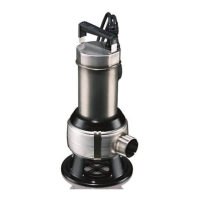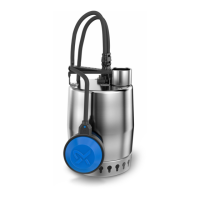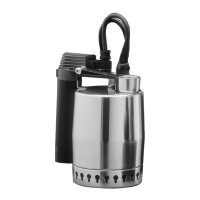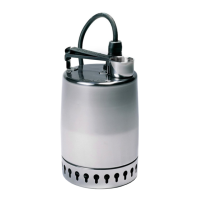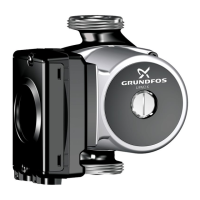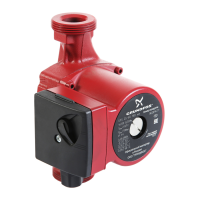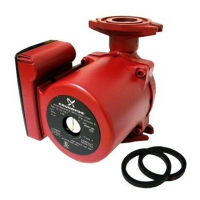English (GB)
23
11. Fault finding the product
For faults indicated by alarms and related to the
controller, see the installation and operating
instructions for the controller.
For faults related to the pumps, see the installation
and operating instructions for the pumps.
WARNING
Toxic material
• Death or serious personal injury
• Wear protective gloves, close the
isolating valves and drain the tank
before you start any work on the tank.
Fault Cause Remedy
1. The pump does
not start.
a) The float switch is blocked in low
position.
1. Make sure that the float switch can
move freely.
2. It may be necessary to adjust the
cable length. See section
6.1 Setting the start levels.
b) The pump cable is defective. Repair or replace the cable.
2. The pump does
not stop.
a) The float switch is blocked in high
position.
1. Make sure that the float switch can
move freely.
2. It may be necessary to adjust the
cable length. See section
6.1 Setting the start levels.
3. The pump starts
and stops
accidentally.
a) The float switch is not set properly. Adjust the cable length of the float
switch. See section 6.1 Setting the
start levels.
b) The level sensor tube is not fixed
properly in the tank and is moving up
as the liquid rises. The sensor receives
wrong signals.
Fix the tube to the tank. See fig. 11.
c) The float switch cannot move freely
because the pump has moved.
Position the pump according to fig. 7
or 8.
4. The tank is
emptying??
although the
pump is running.
a) There is an air pocket in the pump
impeller. The pump cannot build up
pressure.
1. Drill a hole of maximum 6 mm in
the connecting pipes inside the
tank. The air is pushed out when
the pump starts, and the pump
builds up pressure. The pressure
loss due to the hole is negligible.
2. Do not drill a hole in the discharge
pipe outside the tank.
5. The pump makes
an unusual sound.
a) The pump is blocked. Take the pump out of the tank and
remove the blockage. You may need
to dismantle the pump. See the
installation and operating instructions
for the pump.
